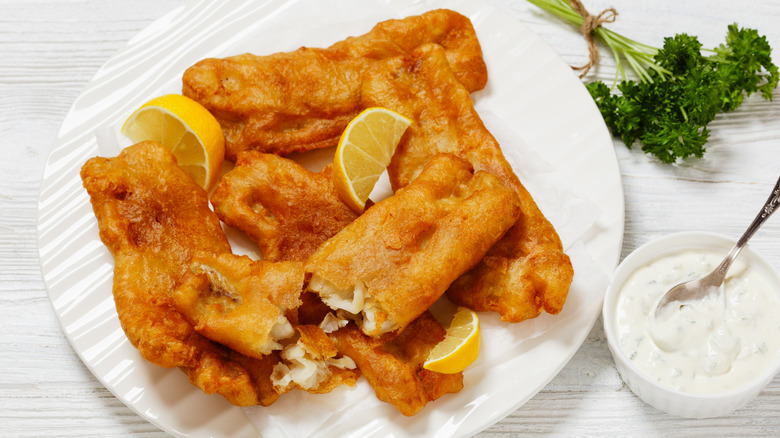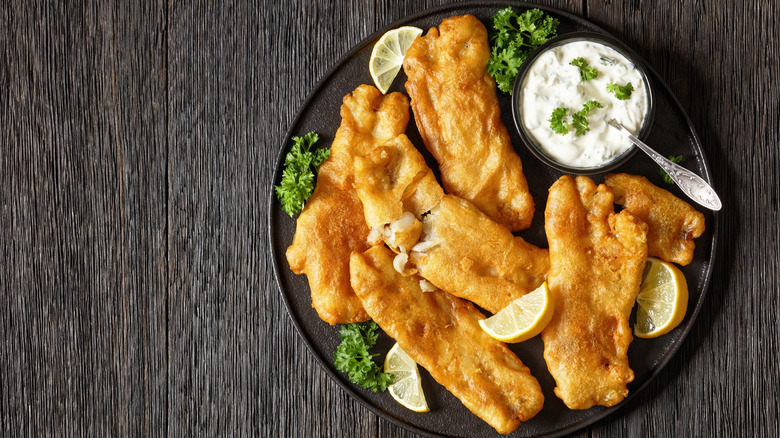The Secret To A Perfect Fish Fry Is In The Dredge
Fried fish is one of my favorite ways to enjoy it, and if you've ever had great U.K. style fish and chips, you'll probably agree. The crunchy coating, contrasted by the soft, flaky fish, makes every bite more satisfying than the last. The dish's popularity means that there's plenty of great hacks out there — like adding club soda to your fried fish batter. But Robert DiGregorio, director of seafood quality at Fulton Fish Market, gave us a great pro tip: Double-dredge your fish for ultra crispy results.
"Double-dredging fish before frying gives you that extra crispy, crunchy texture and helps the coating stick better, especially when frying delicate fish that might flake," DiGregorio told The Takeout. "The second layer creates a thicker, sturdier crust, preventing sogginess and giving you a perfect fry."
This method is a little different to the classic flour, egg, and breadcrumb dredge, since double-dredging only requires dipping your fish into a seasoned egg mixture and seasoned flour, twice. It's as simple as dipping your fish into the eggs, then into the flour, and repeating once more before frying. Pick a mild-tasting white fish such as cod, haddock, or pollock — and follow a few key steps for the best results.
Pro tips when frying fish
Seafood expert Robert DiGregorio gave us some handy advice to make sure the coating sticks to your fish. "You want to start by patting the fish dry, and you can add a little cornstarch to your flour, then chilling the breaded fish before frying to help the coating set," he advised. Cornstarch will help the coating stick evenly to the fish, while chilling it helps the egg and flour solidify, creating a stronger crumb.
If you want to get the crispiest crust on your fish, DiGregorio also mentioned the importance of frying in batches and getting your oil to the right temperature. Overcrowding your fish while frying can cause the temperature of your oil to drop, potentially leaving you with soggy fillets. Plus, working in batches allows your fish to cook more evenly. Your oil (canola or vegetable oil is best for deep-frying fish) needs to be heated to around 350 degrees Fahrenheit; any cooler than this can also result in soggy instead of crispy. Equally, oil that's too hot can burn the outside of your fish and leave the inside undercooked.
DiGregorio's advice to pat your fish dry before dredging is also crucial, since this removes unwanted moisture , helps the egg and flour to stick better, and gives you a crunchier end result with a "golden, crispy crust every time". Sounds like you'll be frying up fish-and-chip-shop-worthy fillets in no time.

